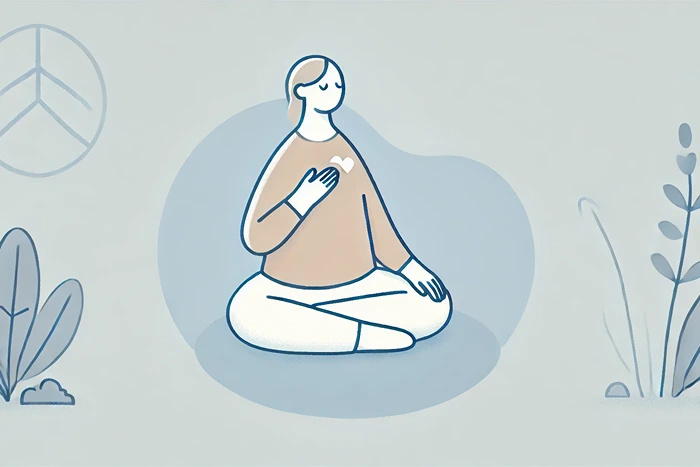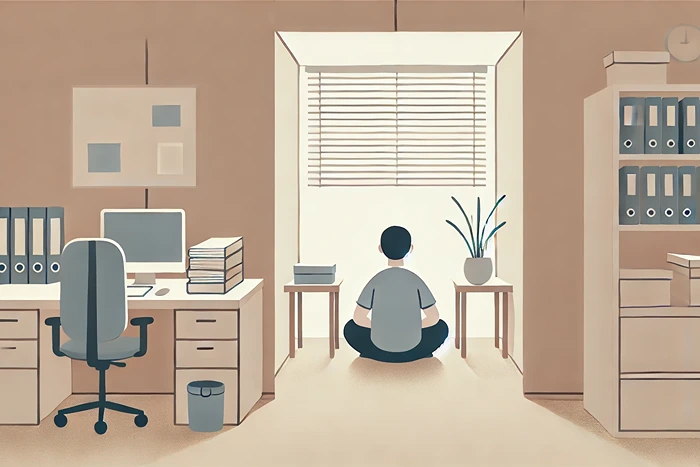
How Forest Bathing Promotes Mental and Emotional Clarity
Forest bathing, also known as Shinrin-yoku, is a Japanese practice that involves immersing oneself in nature, particularly in forests, to improve mental and physical well-being. It’s not about hiking or exerting yourself physically. Instead, it’s about slowing down, breathing in fresh air, and taking in the environment through all your senses.
This practice has grown in popularity as people seek natural solutions to combat stress, anxiety, and mental fog. Research shows that spending time in forests can lower cortisol levels, improve mood, and help individuals gain a sense of emotional stability. When you feel scattered or overwhelmed, forest bathing offers a holistic remedy by bringing balance back to your mind and emotions.
How Does Forest Bathing Impact the Brain?
Our brains are constantly bombarded by stimuli in urban settings—traffic, notifications, noise, and deadlines. It can feel overwhelming, leaving little room for the mental clarity we crave. Forest bathing promotes mental and emotional clarity by allowing our brain to reset. When you step into a forest, the brain’s prefrontal cortex (the part responsible for decision-making and problem-solving) takes a break. Nature essentially gives your mind permission to rest and recharge.
According to a study conducted by the University of Michigan, exposure to nature enhances cognitive function, improving focus and memory by up to 20%. This is because the soothing green hues of nature and the rhythmic sounds of wind and water activate the parasympathetic nervous system, which helps us relax. As a result, forest bathing isn’t just a retreat from modern life but an active tool for mental rejuvenation.
Does Forest Bathing Help with Emotional Regulation?
Yes, and here’s why. When we’re surrounded by nature, we become more in tune with our natural environment. This reconnection reduces feelings of stress, anxiety, and frustration, which tend to cloud our emotional state. By removing yourself from your usual environment and stepping into the tranquility of the forest, you’re allowing your body to release negative emotions and reset your mood.
Helpful Hint:
If you’re new to forest bathing, start small. Find a local park or nature trail and dedicate 30 minutes to being present in the moment. Turn off your phone and focus on breathing, the smells of the forest, and the feeling of the ground beneath your feet.
Benefits of Forest Bathing for Mental and Emotional Health
| Benefit | Description |
|---|---|
| Reduces Cortisol Levels | Forest environments help reduce stress by lowering cortisol, the body’s primary stress hormone. |
| Improves Focus and Attention | Nature exposure enhances cognitive functions like memory, focus, and attention span. |
| Boosts Emotional Regulation | Forest bathing encourages emotional balance by helping individuals process negative emotions and foster mindfulness. |
| Enhances Mindfulness | The sensory experiences of the forest pull you into the present moment, promoting a mindful state of being. |
| Strengthens Immune Function | Phytoncides released by trees boost the immune system, making the body more resilient to illness. |
Why Does Forest Bathing Help with Mental Clarity?
The modern world can clutter your mind with excessive information. Forest bathing promotes mental and emotional clarity by giving you space to think clearly, process emotions, and sort through your thoughts. In the forest, without the constant pull of technology, your mind can work through problems more easily. Forest air is also rich in oxygen, which nourishes your brain cells, enhancing cognitive functions like memory and focus.
Another key factor is the presence of phytoncides, natural chemicals emitted by trees. These chemicals have been shown to lower stress hormones and increase mental sharpness. The more time you spend in the forest, the more your body absorbs these phytoncides, leading to clearer thinking and improved problem-solving skills.
Can Forest Bathing Help with Anxiety and Depression?
Anxiety and depression are often linked to a disconnection from nature. Forest bathing promotes mental and emotional clarity by reducing the symptoms of these mental health conditions. Multiple studies have indicated that spending time in natural environments decreases symptoms of anxiety and depression. This is partly due to the calming effect of nature and the reduction of cortisol, a stress hormone.
Stats:
In a 2019 study by Stanford University, participants who spent 90 minutes walking in a forest showed significantly lower levels of rumination (repetitive negative thoughts) and reduced activity in the brain regions associated with mental illness, compared to those who walked in an urban setting.
Furthermore, forest environments tend to foster mindfulness—a practice closely linked with reducing symptoms of anxiety and depression. By focusing on your surroundings, such as the sound of birds or the rustle of leaves, you’re less likely to dwell on negative thoughts. This immersion in nature can ease emotional tension, providing much-needed relief for those struggling with mental health issues.
How to Start Forest Bathing for Mental Clarity
If you’re feeling mentally or emotionally foggy, forest bathing may be a powerful tool for clearing your mind. Here’s how to get started:
- Find a Suitable Spot: You don’t need a vast forest to begin. A local park, nature reserve, or quiet woodland area can work wonders. The key is to find a space where you feel safe and comfortable.
- Go Slow: Unlike hiking or other outdoor activities, forest bathing is about moving slowly and mindfully. Walk at a relaxed pace, and take time to engage with your surroundings.
- Use Your Senses: Engage all of your senses while in the forest. Feel the textures of the leaves, listen to the wind, and notice the smells around you. This sensory awareness promotes a deeper sense of connection to the natural world.
- Stay Present: This is not the time to think about work or stressors. Focus on the moment and let nature guide your mind to a more peaceful state.
By incorporating forest bathing into your routine, you’ll likely notice a profound shift in your mental clarity and emotional balance. You don’t have to wait for a full-blown mental breakdown to benefit from this practice—regular sessions, even once a week, can prevent emotional clutter from building up in the first place.
Helpful Hint:
Pair your forest bathing sessions with mindful breathing techniques. Slow, deep breathing helps regulate your nervous system, amplifying the calming effects of nature.
How Often Should You Practice Forest Bathing?
There’s no right or wrong answer here. However, studies suggest that spending at least 20 minutes in nature several times a week can have lasting mental health benefits. The key is consistency. By regularly exposing yourself to the natural world, you create a buffer against stress and anxiety, while nurturing long-term mental clarity.
For those who are extremely busy, even short bursts of forest bathing—15 to 30 minutes—can provide relief from everyday mental strain. If you can’t escape to a forest, even being in a green space or sitting by a tree can offer some benefits. The ultimate goal is to maintain a connection to nature in any form that is accessible to you.
What Are the Psychological Benefits of Forest Bathing?
Forest bathing isn’t just about feeling relaxed in the moment. Over time, it can produce lasting psychological benefits that enhance your overall mental well-being. Studies have shown that regular exposure to nature leads to reductions in stress, improvements in mood, and increased cognitive function. But how exactly does forest bathing promote mental and emotional clarity?
One of the most significant psychological benefits of forest bathing is the promotion of mindfulness. When you’re in the forest, your attention naturally shifts away from the stresses of everyday life. The sights, sounds, and smells of nature pull you into the present moment, encouraging a mindful state. This mindful attention fosters mental clarity by allowing your mind to process thoughts without distraction.
Does Forest Bathing Help with Burnout?
Absolutely. Burnout is becoming increasingly common as people juggle work, social obligations, and personal responsibilities. Forest bathing promotes mental and emotional clarity by offering a natural solution to this growing issue. When you’re overwhelmed, your mental energy depletes quickly. Spending time in a forest setting allows your brain to rest, which can help prevent or recover from burnout.
Helpful Hint:
If you’re feeling burned out but don’t have time for a long retreat, start small. A 15-minute walk in a local park can provide immediate benefits, like reduced stress and better focus.
Burnout often results from prolonged periods of stress, which disrupt cognitive functions like memory, concentration, and emotional regulation. By stepping into a calming natural environment, forest bathing reduces the mental load you’re carrying. This not only gives your mind a break but can also spark creative solutions to problems that have been troubling you.
How Does Forest Bathing Impact Emotional Clarity?
Just as it clears your mind, forest bathing also helps clear emotional clutter. When emotions are running high, it can feel like you’re in a fog, making it difficult to think straight or make decisions. Forest bathing promotes mental and emotional clarity by offering a grounding experience. Being surrounded by trees, the smell of soil, and the calming sound of rustling leaves pulls you back into your body, grounding both your thoughts and emotions.
This immersion in nature lowers your heart rate and decreases the production of stress hormones, allowing your emotional state to stabilize. As your emotions calm, you’re able to see situations more clearly and respond with a balanced mindset. For many, forest bathing becomes a form of emotional reset, giving them the space to process their feelings in a healthy way.
Can Forest Bathing Improve Relationships?
It may come as a surprise, but the mental and emotional clarity gained through forest bathing can also improve relationships. When you’re mentally foggy or emotionally overloaded, it’s harder to connect with others. Your patience may wear thin, and you might find it difficult to communicate effectively. Forest bathing helps reduce these barriers by clearing your mind and stabilizing your emotional state.
When you feel more centered and calm, you’re better able to listen to others, respond thoughtfully, and navigate conflicts with clarity. Many people report that after a forest bathing session, they return to their relationships with a greater sense of compassion and understanding, making it easier to maintain healthy and open communication.
How to Get the Most Out of Your Forest Bathing Experience
While forest bathing can provide immediate benefits, you can enhance the experience with a few mindful practices. Here are some tips to help you get the most out of your time in nature:
- Leave Technology Behind: Try to disconnect from phones, emails, and social media. Give yourself the gift of undistracted time in nature.
- Engage Your Senses: Touch the bark of trees, listen to the birds, smell the fresh forest air, and observe the various shades of green around you. By engaging your senses fully, you allow yourself to become more immersed in the present moment.
- Practice Deep Breathing: As you walk or sit in the forest, practice deep, mindful breathing. Inhale slowly through your nose, hold for a moment, then exhale slowly. This helps to calm your nervous system and enhances the mental clarity that forest bathing offers.
The key is to let go of any expectations and simply be present in the moment. The more relaxed and engaged you are, the more profound the mental and emotional clarity you’ll experience.
Is Forest Bathing Accessible to Everyone?
One of the greatest things about forest bathing is its accessibility. You don’t need to travel to a remote forest or national park to experience its benefits. While large forests certainly provide a deep sense of immersion, small green spaces like parks, nature reserves, or even your backyard can also be effective. The most important aspect is connecting with the natural environment around you, whether that’s a sprawling forest or a nearby grove of trees.
Stats:
According to the Environmental Protection Agency (EPA), Americans spend approximately 90% of their time indoors. Forest bathing provides a much-needed opportunity to break this pattern, promoting both physical and mental well-being through time spent outdoors.
Why You Should Make Forest Bathing a Regular Practice
Forest bathing promotes mental and emotional clarity, but to see lasting benefits, consistency is key. Just like any wellness practice—whether it’s meditation, yoga, or regular exercise—forest bathing has cumulative effects. The more often you practice it, the greater the long-term benefits. Here’s why making forest bathing a regular part of your life can enhance your mental and emotional health:
- Reduces Long-Term Stress: Regular exposure to nature helps lower your baseline stress levels. Over time, your body becomes more resilient to stress, allowing you to maintain mental clarity even in challenging situations.
- Boosts Creativity: Nature has been shown to enhance creative thinking. When you immerse yourself in a natural setting, you give your brain the space it needs to explore new ideas and solutions.
- Improves Overall Well-Being: In addition to mental clarity, regular forest bathing can improve sleep, reduce blood pressure, and boost immune function. These physical benefits work in tandem with your mental well-being, creating a holistic sense of health.
Helpful Hint:
Consistency is key. Try to incorporate forest bathing into your weekly routine, even if it’s just for short sessions. The mental clarity and emotional balance you gain from regular exposure to nature can compound over time, leading to significant improvements in your overall well-being.
FAQs
Wrapping Up
Forest bathing promotes mental and emotional clarity by offering a simple yet powerful way to reconnect with nature. Whether you’re looking to reduce stress, improve your focus, or find emotional balance, time spent in the forest can help you achieve these goals. By allowing your mind to rest and your emotions to reset, forest bathing provides a natural solution to the overwhelming pace of modern life. Incorporating this practice regularly into your routine can have lasting benefits, not only for mental clarity but also for your overall well-being.
As we continue to live in a world filled with constant stimulation, forest bathing gives us the space to breathe, think, and simply be. With minimal effort and time, anyone can enjoy the benefits of this practice. Whether you’re wandering through a dense forest or strolling through a local park, the mental clarity you gain from forest bathing is something that can positively impact every area of your life. Give it a try, and you’ll soon discover how nature’s calming presence can refresh your mind and soul.






